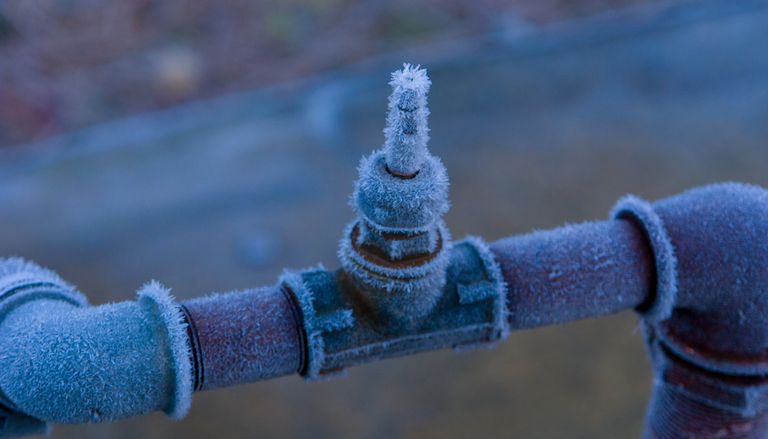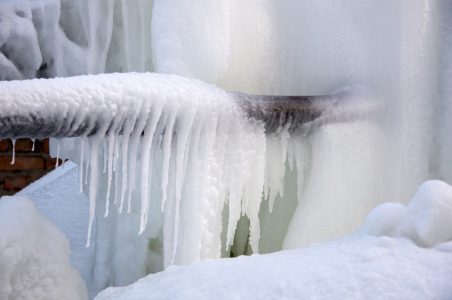Protecting Against Frozen Plumbing in Winter: Critical Advice
Protecting Against Frozen Plumbing in Winter: Critical Advice
Blog Article
The article author is making a few great points relating to How to Prevent Your Pipes From Freezing overall in the content in the next paragraphs.

Cold weather can wreak havoc on your plumbing, specifically by freezing pipelines. Right here's how to stop it from taking place and what to do if it does.
Introduction
As temperatures decline, the danger of icy pipelines increases, possibly causing costly fixings and water damage. Understanding exactly how to prevent icy pipelines is vital for property owners in cool climates.
Avoidance Tips
Insulating prone pipelines
Cover pipelines in insulation sleeves or utilize warm tape to protect them from freezing temperatures. Focus on pipelines in unheated or external locations of the home.
Heating techniques
Maintain interior areas effectively warmed, particularly locations with plumbing. Open up cabinet doors to allow cozy air to flow around pipes under sinks.
How to determine icy pipes
Try to find lowered water flow from faucets, uncommon smells or sounds from pipes, and visible frost on subjected pipelines.
Long-Term Solutions
Architectural adjustments
Consider rerouting pipes away from exterior wall surfaces or unheated locations. Include added insulation to attic rooms, cellars, and crawl spaces.
Updating insulation
Buy top quality insulation for pipes, attics, and walls. Proper insulation aids keep regular temperature levels and minimizes the danger of frozen pipelines.
Shielding Outside Plumbing
Garden hoses and outside taps
Disconnect and drain pipes garden tubes before winter season. Set up frost-proof faucets or cover exterior faucets with protected caps.
Comprehending Icy Pipelines
What creates pipelines to ice up?
Pipelines freeze when exposed to temperatures below 32 ° F (0 ° C) for extended periods. As water inside the pipes ices up, it broadens, putting pressure on the pipe walls and possibly creating them to rupture.
Dangers and damages
Frozen pipelines can bring about water interruptions, residential property damage, and expensive repair services. Ruptured pipes can flooding homes and create considerable structural damages.
Indications of Frozen Piping
Identifying frozen pipelines early can prevent them from bursting.
What to Do If Your Pipelines Freeze
Immediate activities to take
If you think frozen pipes, maintain taps open up to soothe stress as the ice melts. Use a hairdryer or towels soaked in warm water to thaw pipes slowly.
Verdict
Protecting against frozen pipes calls for positive measures and fast reactions. By understanding the reasons, signs, and safety nets, property owners can protect their plumbing throughout cold weather.
6 Proven Ways to Prevent Frozen Pipes and Protect Your Home
Disconnect and Drain Garden Hoses
Before winter arrives, start by disconnecting your garden hoses and draining any remaining water. Close the shut-off valves that supply outdoor hose bibs and leave the outdoor faucet open to allow any residual water to drain. For extra protection, consider using faucet covers throughout the colder months. It’s also important to drain water from any sprinkler supply lines following the manufacturer’s directions.
Insulate Exposed Pipes
Insulating your pipes is an effective way to prevent freezing. Pipe insulation is readily available at home improvement stores and is relatively inexpensive. Pay close attention to pipes in unheated areas such as the attic, basement, crawl spaces, or garage. Apply foam insulation generously to create a buffer against the cold. You can also wrap your pipes in heat tape or thermostat-controlled heat cables for added warmth.
Seal Air Leaks
Inspect your home for any cracks or openings that could let in cold air. Seal any holes around the piping in interior or exterior walls, as well as the sill plates where your home rests on its foundation. Additionally, make sure to keep your garage door closed unless you’re entering or exiting. Leaving it open creates a significant air leak that can lead to frozen pipes.
Allow Warm Air Circulation
During cold snaps, it’s essential to allow warm air to circulate evenly throughout your home. Leave interior doors ajar to promote better airflow. Open kitchen and bathroom cabinets to help distribute heat consistently around the rooms. If you have small children or pets, be sure to remove any household chemicals or potentially harmful cleaners from open cabinets for safety.
Let Faucets Drip
A small trickle of water can make a big difference in preventing ice formation inside your pipes. When temperatures drop significantly, start a drip of water from all faucets served by exposed pipes. This continuous flow helps prevent the water from freezing. Additionally, running a few faucets slightly can relieve pressure inside the pipes, reducing the chances of a rupture if the water inside does freeze.
https://choateshvac.com/6-proven-ways-to-prevent-frozen-pipes-and-protect-your-home/

Hopefully you enjoyed reading our article on 6 Ways to Prevent Frozen Pipes. Thank you for taking a few minutes to read our short article. Are you aware of somebody else who is looking into the subject? Feel free to promote it. Thanks so much for going through it.
Call Today Report this page